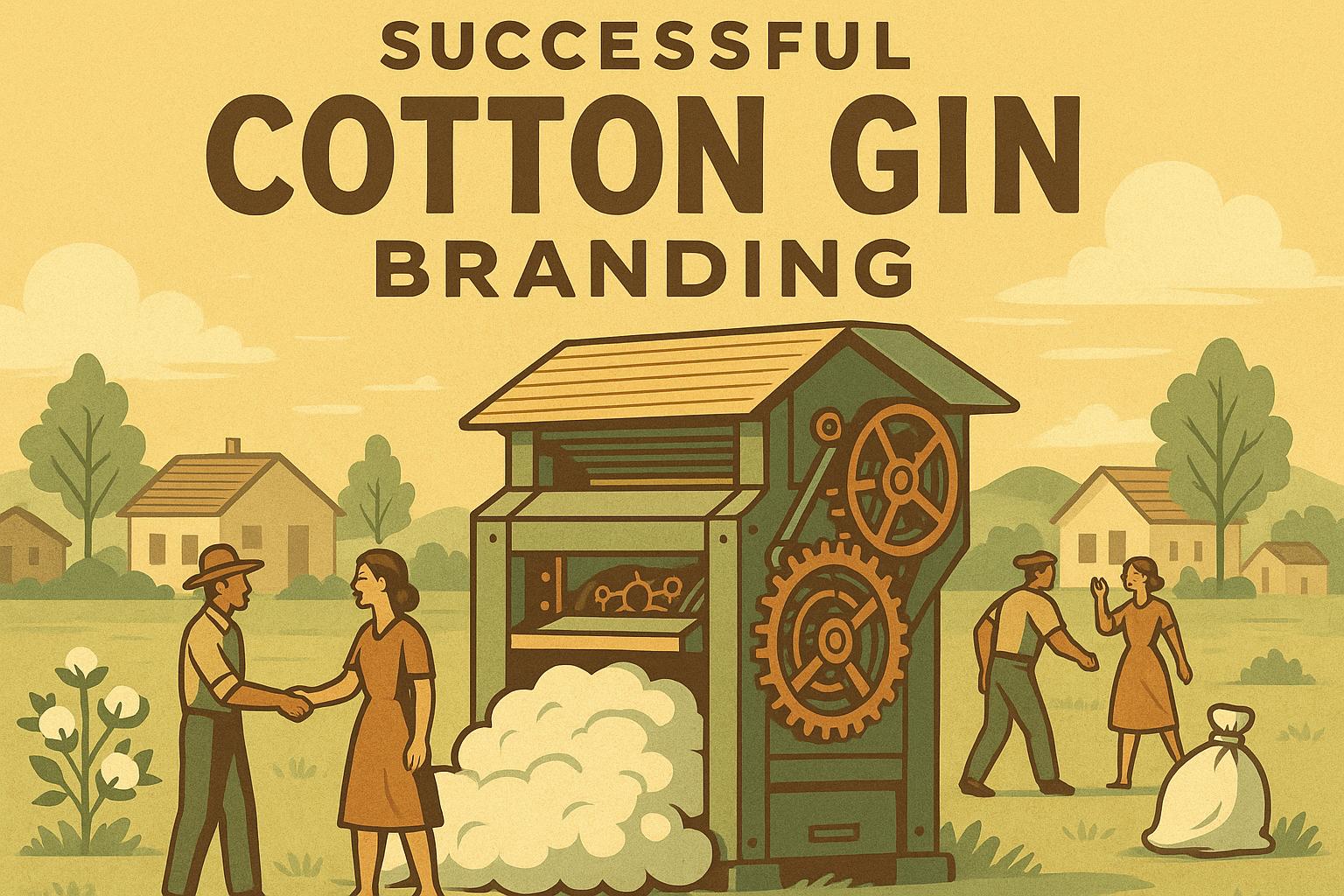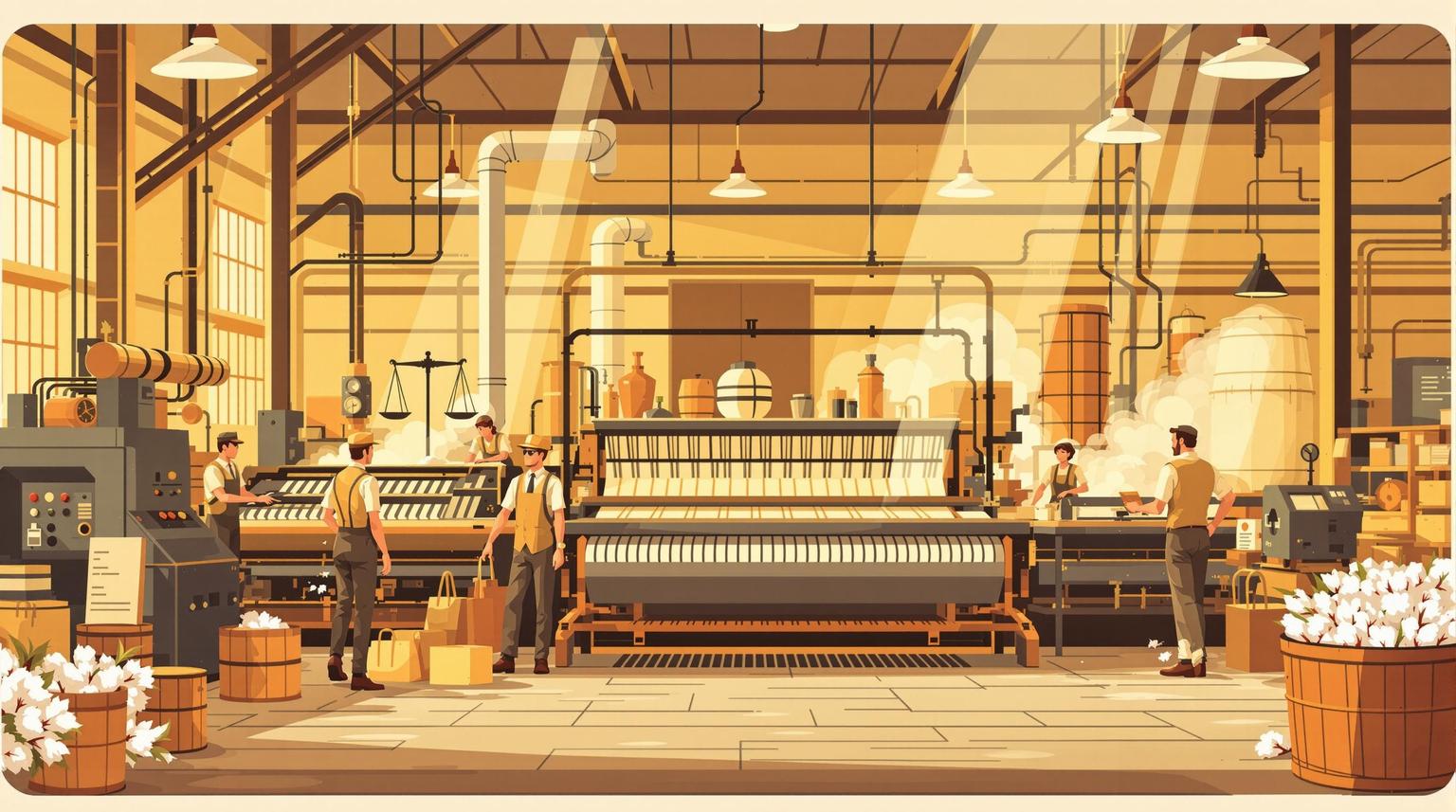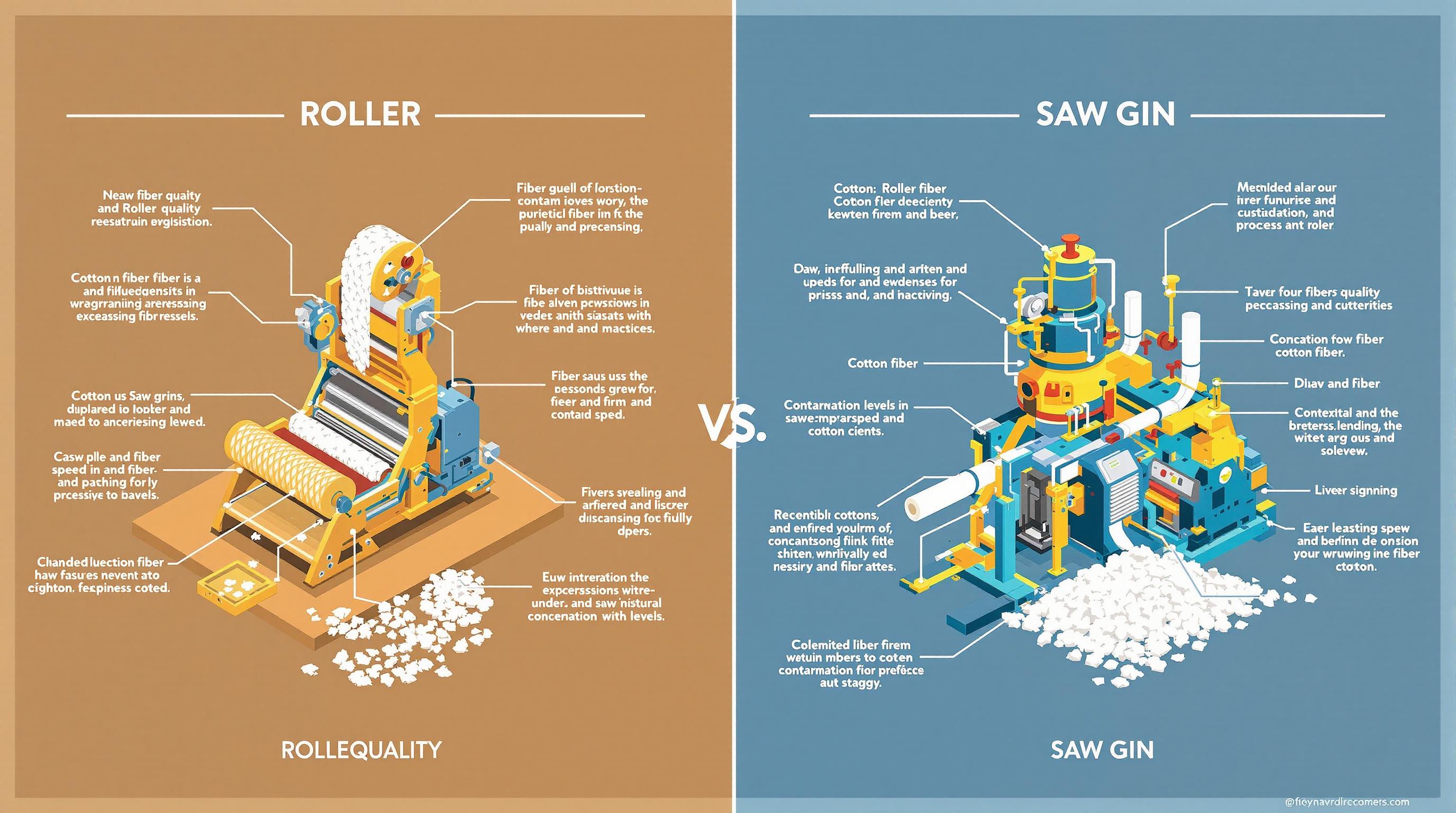U.S. cotton subsidies disrupt market prices and global trade. These government programs, like Price Loss Coverage (PLC) and Marketing Assistance Loans, shield farmers from financial risks but encourage overproduction. This oversupply lowers global cotton prices, sparking international trade disputes, including a major case with Brazil at the WTO.
Key points:
- Subsidies like PLC and STAX create artificial price floors, leading to higher production even when demand is low.
- Global competitors argue these policies give U.S. farmers an unfair advantage.
- Subsidy reforms in recent Farm Bills now focus on risk management rather than direct payments.
- U.S. cotton subsidies are projected to decline significantly by 2026, reflecting policy changes and market adjustments.
The cotton supply chain - from farmers to cotton gins - feels the ripple effects of these policies. Farmers benefit from reduced risks, while gins process higher volumes of cotton. However, global trade tensions and market imbalances highlight the need for continued reforms.
Federal Cotton Subsidy Programs Overview
Types of Federal Cotton Subsidies
In the U.S., federal cotton subsidies come in various forms, each tailored to support producers under different market conditions:
- Marketing Assistance Loans: These loans provide short-term financing with cotton crops used as collateral. If market prices dip below the loan rate, producers can forfeit their crop, effectively setting a price floor.
- Counter-cyclical Payments: Activated when market prices drop below specific target levels, these payments help offset financial losses.
- Direct Payments: These are fixed annual payments made to producers, regardless of market performance.
- The Step 2 Program: This program provided payments to domestic users and exporters when U.S. cotton prices exceeded global market levels. However, it faced international criticism and scrutiny.
- Market Loss Assistance Payments: These were emergency payments designed to provide relief during periods of exceptionally low commodity prices.
More recent programs have shifted toward insurance-based mechanisms. For instance, the Stacked Income Protection Plan (STAX) offers revenue protection based on regional performance. Meanwhile, the 2018 Farm Bill introduced Price Loss Coverage (PLC) and Agricultural Risk Coverage (ARC), giving producers the flexibility to choose the program that aligns best with their needs.
These subsidy programs have undergone significant changes over the years, shaped by legislative reforms to address evolving market dynamics.
Legislative Background
Federal cotton subsidies trace their roots back to the 1930s and have been continually refined through various Farm Bills. A significant turning point came with the 2002 Farm Bill, which expanded cotton support programs. Between 2003 and 2008, the Commodity Credit Corporation (CCC) allocated an average of $2.8 billion annually to upland cotton subsidies.
The 2018 Farm Bill further modernized these programs. Under the Bipartisan Budget Act of 2018, cotton seed was reintroduced as a covered commodity, broadening eligibility for federal support. The legislation also enhanced existing programs by incorporating market-responsive options like PLC and ARC, while maintaining the insurance-based STAX program.
How Subsidies Are Allocated
The way subsidies are distributed depends heavily on market conditions and the specific criteria of each program. For example:
- Price Loss Coverage (PLC): Payments are triggered when the national average market price falls below a set reference price. The payment amounts are calculated based on historical production data.
- Agricultural Risk Coverage (ARC): This program provides payments when county-level revenue drops below a benchmark level, offering protection against revenue declines. Producers must choose between ARC and PLC at enrollment, with their selection applying for the entire coverage period.
- STAX Program: This area-based program uses regional data to determine payouts, providing revenue protection on a broader scale.
Subsidy levels are highly variable, reflecting shifts in market conditions. For instance, subsidies peaked at $847.3 million in 2021 but fell to $441.1 million in 2022 and dropped sharply to $0.6 million in 2023. Looking ahead, projections estimate subsidies will total $89.1 million in 2025 and decrease further to $61.0 million in 2026. Over the five-year span ending in 2025, cotton subsidies are expected to decline at a compound annual rate of -31.0%.
These allocation mechanisms have a direct impact on market prices and contribute to broader discussions about how policy decisions influence the cotton supply chain.
How Price Distortions Work and Research Evidence
How Subsidies Create Price Distortions
Federal cotton subsidies disrupt natural market dynamics by introducing government-backed programs that skew supply and demand. Programs like Price Loss Coverage and Marketing Assistance Loans provide financial support to cotton producers, encouraging production decisions that may not align with actual market signals.
For example, marketing assistance loans set price floors, which incentivize producers to continue planting cotton even when the market is oversupplied. If market prices drop below a certain level, producers often turn to government support instead of selling on the open market. This delays the natural process of market correction.
Similarly, counter-cyclical payments and revenue insurance programs shield producers from the financial consequences of low market prices. Counter-cyclical payments provide income support during price slumps, while insurance programs ensure revenue stability. These safety nets encourage producers to maintain or even expand cotton planting in less profitable areas, rather than scaling back or switching to alternative crops. As a result, production levels remain artificially high, even when market conditions suggest otherwise.
These behaviors, driven by subsidies, have been thoroughly examined in various economic studies.
Research Studies on Cotton Price Distortions
Research consistently shows how U.S. cotton subsidies affect both domestic and global markets. Studies reveal that these subsidies lead to increased cotton production during periods of government support, which inflates overall supply and drives down global prices. While the exact numbers vary across studies, there’s a shared understanding that subsidy-driven overproduction distorts market dynamics.
Economic models suggest that eliminating these subsidies could lead to more balanced global cotton prices. Such changes could particularly benefit cotton producers in developing countries, who often struggle to compete with subsidized U.S. cotton. Despite differences in methodology, researchers broadly agree on the significant role U.S. subsidies play in shaping global markets.
WTO Disputes and Economic Effects
The market distortions caused by U.S. cotton subsidies have also sparked international trade disputes. One notable case, brought by Brazil in the early 2000s, challenged these subsidy programs as unfair trade practices that disadvantaged cotton producers in other nations.
The dispute highlighted aspects of U.S. policies that incentivized payments to domestic mills and exporters, prompting claims that these measures unfairly tilted the playing field. As a result of the ruling, the U.S. was forced to adjust certain subsidy programs, leading to policy reforms aimed at reducing trade distortions.
This case not only highlighted the complexities of agricultural trade but also demonstrated the far-reaching impacts domestic subsidies can have on global markets. The lessons from this dispute continue to shape discussions about the future of U.S. cotton subsidy policies and their role in international trade.
What's the REAL Benefit of Local Trade vs Global Subsidies?
sbb-itb-0e617ca
Effects on Cotton Supply Chain Stages
Federal cotton subsidies play a major role across various stages of the cotton supply chain, influencing everything from production to processing.
Impact on Cotton Producers
These subsidies give U.S. cotton producers a noticeable edge by offsetting production costs and reducing financial risks. This creates what some refer to as an "artificial comparative advantage", making U.S.-grown cotton more competitive in the global market.
Impact on Cotton Gins
The effects aren’t limited to farmers. Processing facilities, like cotton gins, also feel the impact. Although most studies focus on the subsidies' influence on producers, changes in production levels directly affect the volume of raw cotton processed. This means shifts in subsidy policies can ripple through to the gins. For a comprehensive list of cotton gin locations in the U.S., check out cottongins.org.
Policy Reforms and Future Directions
The cotton industry is undergoing a transformation as recent policy reforms address the challenges caused by subsidy-driven market distortions. Changes in U.S. cotton subsidy policies have shifted the focus from direct payments to strategies that emphasize risk management and transitional support. These adjustments aim to provide farmers with greater flexibility while reducing the market disruptions discussed earlier.
Recent Policy Reforms
Recent Farm Bills have introduced substantial updates to cotton subsidies, reflecting changes in agricultural priorities and the global trade environment. These reforms tie financial support to market conditions and risk management, moving away from traditional direct payments. The goal is to align domestic policies with international trade standards while encouraging smarter, more efficient production practices.
How the Cotton Supply Chain Adapts to Changes
The updated subsidy framework has prompted stakeholders across the cotton supply chain to adapt. Farmers are diversifying their crops to mitigate risks, while processing facilities like cotton gins are improving their operations through better contracting practices and advanced risk management tools. These strategies help maintain stability during policy shifts and prepare the industry for future debates on subsidy structures.
Future of U.S. Cotton Subsidies
The future of U.S. cotton subsidies will likely focus on striking a balance between supporting domestic agriculture and meeting international trade commitments. Discussions may emphasize separating financial aid from production levels, introducing sustainability incentives, and promoting the use of precision agriculture technologies. Regional considerations and evolving political landscapes will also play a key role in shaping these policies, potentially benefiting all players in the supply chain.
For more information on how these reforms are influencing local operations and regional trends, visit cottongins.org for additional resources.
Conclusion
Policy-driven price distortions in the cotton supply chain reveal significant market imbalances. Federal subsidies send skewed signals that ripple through the entire industry - from farmers in the fields to processing facilities like cotton gins. This backdrop provides a framework for exploring recent policy shifts.
Studies show that subsidies often disconnect market prices from the realities of supply and demand. Farmers are incentivized to overproduce, while cotton gins are left to navigate the instability caused by policy-driven pricing. On the global stage, these practices have drawn challenges from international trade partners through WTO disputes, underscoring the broader consequences of domestic agricultural policies.
Recent policy changes aim to address these issues by moving toward market-driven risk management strategies. By replacing direct payments with tools that respond to market conditions, policymakers are working to support American cotton farmers while promoting fair competition internationally.
For stakeholders in the cotton industry, understanding these policy shifts is critical for making sound business decisions. Cotton gins, in particular, must adapt to evolving subsidy frameworks to remain efficient. As production changes ripple through the supply chain, gins are increasingly adopting precision agriculture technologies and sustainable practices to stay ahead. These advancements will likely play a key role in how the industry adjusts to future policy changes.
Looking forward, the industry must prioritize strategic reforms to ensure fair global competition. A coordinated effort between policymakers and industry leaders will be essential to creating a resilient and competitive American cotton market. The lessons learned from addressing price distortions today will shape the future of a stronger, more sustainable cotton industry - one that thrives both at home and abroad.
For cotton gin operators seeking to stay updated on policy developments and connect with regional processing networks, platforms like cottongins.org offer valuable resources tailored to different cotton-growing regions.
FAQs
How do U.S. cotton subsidies affect global prices and trade relationships?
U.S. cotton subsidies have a noticeable impact on global cotton prices and trade patterns. By providing financial support to domestic cotton farmers, these subsidies often lead to overproduction. The surplus cotton is then exported at prices that don't reflect true market conditions, undercutting global prices. This creates significant challenges for farmers in developing nations, particularly in Africa, who struggle to compete with these artificially low prices.
Beyond affecting individual farmers, these subsidies also disrupt international trade by creating imbalances and fueling disputes. They've been at the heart of trade conflicts and cases brought to the World Trade Organization (WTO). These policies not only strain global trade relationships but also raise questions about fairness and the long-term effects on the cotton supply chain.
What changes have recent Farm Bills made to U.S. cotton subsidies?
The latest Farm Bills have brought noteworthy updates to U.S. cotton subsidies. The 2025 legislation reintroduced cotton storage payments, added transferable tax credits, and provided over $1 million in support per farm spread across a 10-year timeframe. These steps are designed to reinforce the cotton supply chain and provide greater market flexibility.
On top of that, subsidies for cotton, peanuts, and rice have seen a sizable increase. This adjustment is intended to stimulate demand and help stabilize prices in the agricultural sector. These efforts underscore an ongoing commitment to supporting U.S. farmers and maintaining their competitiveness in global markets.
What impact will the reduction of U.S. cotton subsidies by 2026 have on the cotton supply chain and global markets?
The scheduled reduction of U.S. cotton subsidies by 2026 is expected to push cotton prices toward a more market-oriented model, limiting the sway of government intervention. This adjustment could encourage a more efficient supply chain by promoting practices that are less reliant on subsidies.
That said, the shift may come with some short-term hurdles, including fluctuations in prices and changes in domestic production levels. These changes could have a global impact, influencing trade patterns and making markets more sensitive to price shifts as producers and buyers adjust to the new dynamics.


